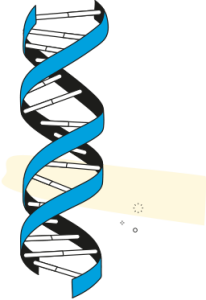
Cologne, 1989: The physics student Stefan Miltenyi has an ingenious idea. He coats small iron particles with antibodies and couples them to the receptors of certain cells. By applying a magnetic field, he succeeds in isolating these cells from a sample, so “Magnetic Activated Cell Sorting” (or MACS for short) is born, which is used worldwide today in biopharmaceutical and medical research.
With this technology, Miltenyi lays the foundation for his own company – Miltenyi Biotec – which he founds in Bergisch Gladbach near Cologne in 1989. More than three decades later, he still runs the company that bears his name. Since then, it has become a frontrunner in biotechnology.
Hope for serious diseases
Around 4,700 employees work for Miltenyi Biotec worldwide, almost 25 % in R&D – so the passion for new technologies still drives the company, just as it did the young student back then. Miltenyi Biotec’s declared goal is to contribute with its technologies to the treatment of cancer, autoimmune and neurodegenerative diseases. The company is also involved in clinical studies relating to cell and gene therapies. These therapies are set to revolutionize medicine, as they also offer huge potential for serious diseases previously deemed incurable.
Cells in focus

Cell therapies with living cells are often used to replace the body’s damaged or defective cells. In this process, cells are taken from a donor or the patient, proliferated outside the body, and subsequently re-administered. Stem cell therapy is a prime example.
Gene therapies, however, are designed to adapt genetic material – a faulty gene sequence can be replaced or repaired. DNA or RNA is introduced into body cells to achieve this. Prior to this therapeutic administration, the engineered cells must also be cultivated outside the body.
In both – cell and gene therapies – it is essential to proliferate cells in a controlled way. Only then is there sufficient material for effective therapy. This cell proliferation also features in one of Miltenyi Biotec’s current projects.
“As the cell products are administered to patients, aseptic processing is a top priority.”Reiko Jennerjahn,
Manager Liquid Solutions
at Miltenyi Biotec
Sterile filling of bags
“This project is about filling cultivation medium for cells into bags. The medium is subsequently used for growing the cells,” Reiko Jennerjahn, Manager Liquid Solutions at Miltenyi Biotec, explains. “As the cells are administered to patients, aseptic processing is a top priority. While looking for available automated filling solutions, we came across Harro Höfliger, and its experience in aseptic bag filling raised our interest. We got in touch in May 2022 and together we conducted our first filling trials soon after.”
Tailor-made therapies,
tailor-made system

This resulted in a system that aseptically fills about 360 bags an hour. Depending on requirements, up to three bag formats with different volumes can be produced. Several measures ensure sterility throughout the process. Reiko Jennerjahn says: “The pre-sterilized bags are passed through a VHP airlock to ensure sterility. In addition, an isolator from our partner Franz Ziel GmbH is integrated to shield and control the process environment. Multiple bags are filled simultaneously, whereby a single-use system reduces the risk of contamination.” The integrated weighing function provides for accurate results, which enables trend control of the filling station. After filling, the bags are sealed, followed by 100 % Container Closure Integrity Testing (CCIT) from WILCO.

The system fills about 360 bags an hour. Several measures ensure sterility throughout the process. A noteworthy element is the inaugural deployment of Stäubli’s newly developed Stericlean+ robot.
With its individually coordinated process steps, the system perfectly exemplifies baXeptic. Harro Höfliger offers solutions under this brand name for aseptic bag applications. Reiko Jennerjahn sums up: “Cell therapies are very promising, not least because they are individualized to patients. A tailor-made system to facilitate tailor-made treatments – it’s a perfect match.”

